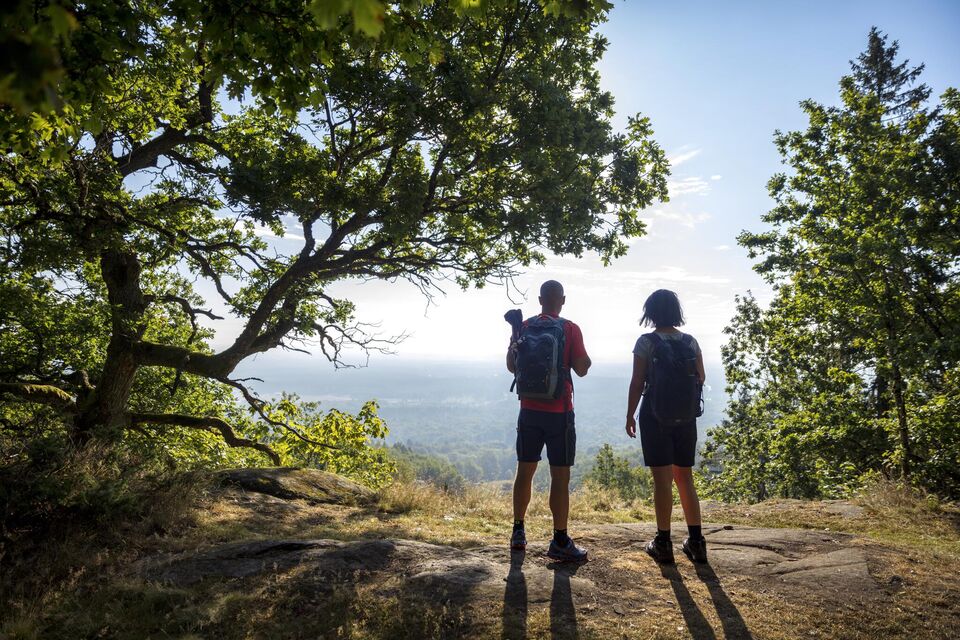kan det bli bättre?
I recently returned from a 4-day trip into the Grand Canyon, using the Esbit Pocket Stove as my only cooking source, and here is a summary of my experiences with it.
I loved it. Flat out loved it. And my backpacking partner was so impressed, she kept talking about calling Campmor as soon as she got home.
I won’t bore you with the details of the stove’s design and weight, which have been provided elsewhere. But I will say that the fact that there are no parts to break, clog, clean, or malfunction provided a level of confidence that I enjoyed.
It was quite cool where I used the stove. Night time temperatures were below freezing each night, and the temps at dinner time (when the stove was used) were probably in the mid-30’s. The temperature of the water I was cooking with had to be close to that. I haven’t tried the stove at altitude, but I can’t imagine its performance would be affected at all, except to the extent that lower boiling temps at altitude require longer cooking times.
Before taking the stove on this trip, I experimented with it on cool mornings (mid-forties) at home, trying to cook Lipton dinners. I had heard that one pellet was not enough to cook a dinner on, so I tried two. Way too much. I tried 1 and ½. More than enough. I tried 1 pellet. It worked fine. In the field, I never found the need for more than one pellet per meal, even though it was pretty cold. I cooked three dinners with three pellets. As always, YMMV, but I’m not sure why people are using more than one pellet per dinner. It was plenty for me. I just put everything into the pot, covered the pot, put it on the stove, and waited 20 minutes, stirring about every 5 minutes. By that time, the pellet had burned out, the food was cooked, and the "let stand" period had elapsed. This was true of a Lipton dinner, a home-made Minute Rice concoction, and a home-made vermicelli concoction. Since I don’t cook in the mornings while backpacking, the total weight of my stove and fuel for a 4-day trip was about 5 ounces. Amazing. If you need a longer cooking time, don’t put more pellets in the stove to start with. Rather, add another half or full pellet after 10 minutes. 1/2 pellet would be enough to heat water for coffee in the morning.
The fuel pellets do blacken the bottom of the pot a little, but not much. The pellets also have a slightly unpleasant odor, as do the fumes. But the fumes are not toxic. And since there is no flare-up, you can cook in a well-ventilated tent tent or vestibule.
Important Caveat: This little stove gets hot (the pellet burns at 1400 degrees Fahrenheit). DO NOT use it while it is sitting on a tent floor, a book, anything plastic, the back of your dog, a photograph of a loved one, or a piece of wood about whose appearance you care.
Some kind of windscreen is important. But I designed a nifty windscreen as follows: Fold two pieces of aluminum foil into rectangles approximately 2.25" by 1.75". Then curl one of the long ends of each piece into a little hook shape. You can then hang each of the pieces of foil over the exposed sides of the stove, thereby protecting the flame from any wind and also concentrating the heat. The two pieces of foil weigh nothing and take up no space because they can be stored inside the folded stove. An MSR foil-type will work too.
I tried using an inexpensive substitute for the Esbit pellets as fuel: U.S. Military-issue trioxane pellets, used to heat MRE’s. Forget it. They burn too quickly to be useful on a backpacking trip. Stick with the Esbit tabs. Buy them in bulk. I haven't tried hexamine tabs, so they may provide an alternative.
The stove is not indestructible. If you beat it up enough, it gets hard to open and close. But at $9.99, you can afford a replacement if you get careless.
The stove, fuel, windscreen, lighter, spoon, and cleaning-bandanna all fit in my 1.3 L pot.
Forget about simmering. This is a one-temperature stove. But I never had anything boil over the way it would with a white-gas stove on "Hi".
Lucian ("Bristlecone")


